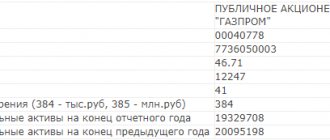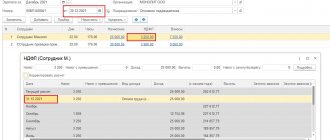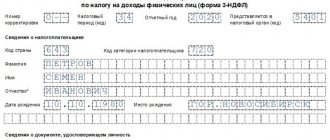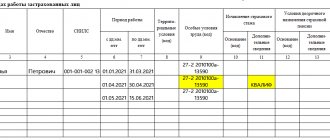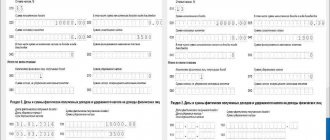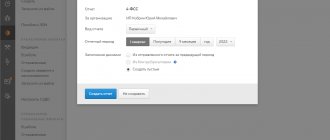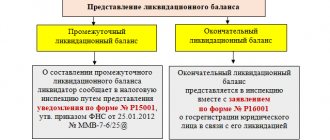4-FSS is a mandatory quarterly report for all legal entities and individual entrepreneurs who charge injury contributions for their employees under an employment or civil contract.
In 2022, it is necessary to submit the 4-FSS report four times: in January - for 2022, in April - for the first quarter of 2022, in July - for half a year, and in October - for 9 months of 2022. The report for the entire year 2022 is due in January 2023.
All insurers - organizations, as well as individual entrepreneurs with employees - submit a 4-FSS report on them. It is also rented out by individuals who hire official assistants under an employment contract, for example, a personal chef or driver.
We'll tell you what the 4-FSS report is, how to fill it out, in what ways and when to submit it.
Who, when and where to take 4-FSS in 2022
The report must be sent to the territorial office of the FSS:
- at the location of the organization (including if there are separate divisions without their own current account or that do not pay salaries to employees);
- at the place of registration of the unit , if it is allocated to a separate balance sheet, has employees and pays them independently;
- at the place of residence of the individual entrepreneur.
The 4-FSS report is submitted 4 times a year : at the end of the first quarter, half-year, nine-month period and year. The deadline for submitting the form depends on the form in which it is submitted. It, in turn, depends on the number of insured persons:
- if there are up to 25 people inclusive, then you can submit 4-FSS on paper or electronically, at the employer’s choice
- if 26 or more - only in electronic form
The deadline for submitting a report in paper form is the 20th day of the month following the reporting quarter, in electronic form - the 25th day .
That is, the tax office unobtrusively, in the form of longer deadlines, offers to submit it electronically.
The deadlines for submitting the report for the periods of 2022 are presented in the table:
| Period | On paper | In electronic form |
| I quarter | April 20, 2022 | April 25, 2022 |
| Half year | July 20, 2022 | July 25, 2022 |
| 9 months | October 20, 2022 | October 25, 2022 |
| In a year | January 20, 2023 | January 25, 2023 |
If an organization is undergoing liquidation, then the 4-FSS calculation must be submitted to the FSS before submitting an application for liquidation to the tax office. It must include data from the beginning of the year until the day the report is submitted to the fund. The amount of contributions must be transferred to the Social Insurance Fund within 15 days after submitting the report.
Who fills out 4-FSS
4-FSS is submitted by all insurance premium payers who make payments to individuals: organizations, entrepreneurs and private practitioners (but only if they have hired personnel). Citizens who officially hire assistants under employment contracts will also have to report under 4-FSS: housekeepers, builders, drivers, nannies, watchmen.
The obligation to file 4-FSS is not affected by the tax regime used by the policyholder, the form of ownership, or the number of employees. However, the method of submitting the report depends on the number of insured employees: if there are no more than 25 of them, you can submit it either on paper or electronically. If there are 26 or more insured persons, alas, there is no choice - 4-FSS is sent only via telecommunication channels (TCS).
We talked about the nuances of filing electronic reports in this material.
Changes to 4-FSS in 2022
The FSS developed a new form 4-FSS, which it planned to put into effect in the first quarter of 2022. The update is due to the fact that from January 1, 2022, the entire country switched to direct payments - the Social Insurance Fund pays sick leave and benefits directly to employees, rather than reimbursing the employer.
only the draft of the new 4-FSS form is available - the form should be significantly reduced. Information on the costs of insurance coverage, tables 2 and 3, will be removed from it. Table 1.1 will be added to decipher information about the base subject to contributions and the amount of calculated contributions for organizations with OP on a separate contribution rate. There are other changes too.
Anyone who reports using the old form and has switched to the direct payments project from the beginning of 2022 should take into account: do not fill out line 15 in table 2 and do not fill out and submit table 3.
The changes are aimed at simplifying the form. It was planned that the new form 4 - FSS will be applied starting from the first quarter of 2021. However, there is still no order to approve the new form 4-FSS.
Therefore, reporting on Form 4 of the Social Insurance Fund for the 4th quarter of 2022 must be submitted on the same form.
Organizations with more than 25 employees are required to submit Form 4-FSS via the Internet; Extern is suitable for this.
4-FSS where to submit in electronic form
If you employ more than 25 people, then you are required to submit Form 4-FSS electronically using an electronic digital signature.
The algorithm of actions is as follows: 1. Conclude an agreement with an electronic document management company. 2. Notify your territorial FSS office about the conclusion of such an agreement. 3. Start sending 4-FSS reports via the Internet. For example, through the service of the company Taxcom Online-Sprinter. 4. After you have submitted the report, the Foundation will respond with a delivery receipt as confirmation that you have submitted the required report. 5. After proper verification of the 4-FSS report, you will receive a protocol with the results.
Form 4-FSS and its completion
The current form of the document was approved by order of the Social Insurance Fund dated September 26, 2016 No. 381 . The latest changes to it were made by order of the FSS dated 06/07/2017 No. 275 .
Only small companies can submit paper reports. It must be filled out using a pen with blue ink, using block letters. Errors can be corrected by carefully crossing out the incorrect indicator with the signature of the policyholder and the date of correction. You cannot use a corrector.
After filling out 4-FSS, you need to number the completed pages and have the report endorsed by the head of the company or his authorized representative. Each sheet of the report is endorsed.
the electronic report is numbered automatically and signed with an electronic signature.
The form consists of a title and 6 tables.
The title page, Table 1, 2 and 5 are filled out by all policyholders.
The remaining tables are filled in if necessary:
- table 1.1 - if the policyholder sent employees to temporary work in other organizations
- Table 3 - if you have sick leave for an injury at work
- table 4 - in case of accidents
Next, we'll look at how to fill out the form correctly.
Title page
The following information is indicated at the top of the title page:
- Policyholder registration number . This is the number that the company (IP) received when registering with the Social Insurance Fund.
- Subordination code . Code of the fund branch to which the policyholder is attached.
- Correction number . The original form states "000". If a clarifying calculation is submitted, “001”, “002” and so on are indicated.
- K period . Select a code from the options presented below the cell. For example, the first quarter corresponds to the code “03”, for the six months - the code “06”, for 9 months - “09”, for the year - the code “12”. The number of requests to the fund for compensation payments is indicated through a fraction.
- Calendar year . The year to which the reporting period relates is indicated - “2021”.
- Termination of activities. If the entity ceased to operate during the reporting period, “L” is indicated.
- Name. You must indicate the full name of the legal entity along with the legal form or the last name, first name and patronymic of the entrepreneur.
- Basic codes:
- TIN - 10 lines for an organization, 12 for an entrepreneur;
- Checkpoint - entrepreneurs do not indicate;
- OGRN (OGRNIP) - registration number of the company or individual entrepreneur from the Certificate of Registration;
- OKVED code is a code for the type of activity in accordance with the All-Russian Classifier.
- Contact phone number . Indicated along with the city code (format shown in the image below).
- Budgetary organizations . This field appeared in 2017 and is intended for budget organizations. The policyholder's attribute is entered in the field: 1 - Federal budget 2 - Budget of a constituent entity of the Russian Federation 3 - Municipal budget 4 - Mixed financing.
- Insured's address. Specified as shown in the image below:
Title page (beginning) - Information about the number:
- the average number of employees is indicated by all policyholders;
- the number of working disabled people and the number of workers engaged in work with harmful hazardous conditions is filled in if there are such workers.
- Number of sheets on which the calculation is presented. If there are attachments and supporting documents, this number of sheets is also indicated.
The lower part of the title page is intended for the signatory to confirm the completeness and accuracy of the information specified in the calculation. The rules for filling out this part are as follows:
- First of all, the status code of the signatory - the policyholder, his representative or legal successor.
- The following fields are filled in depending on who signs the calculation:
- Full name of the director of the policyholder;
- Full name of the individual entrepreneur;
- Full name of the policyholder's representative - an individual;
- name of representatives - legal entity.
- If a representative signs, the details of the document by which he is authorized to do so .
Title page (end)
Table 1. Calculation of the base for calculating insurance premiums
The table contains information on the amounts of payments and other remuneration accrued to individuals for each month of the reporting quarter and on the total amount of accruals for the year.
Table 1 consists of 9 rows. Lines 1-4 are filled in for each of the last three months of the reporting period. In columns 4 and 5 and 6, the indicator from column 1 is indicated monthly , and in column 3 - for the entire reporting period . These lines reflect the following data;
- line 1 - amounts of accrued payments to individuals;
- line 2 - amounts not subject to contributions;
- line 3 - taxable base - the difference between lines 1 and 2 for each column;
- line 4 - amounts of payments to disabled people included in the indicators of line 3.
The remaining lines reflect the following data:
- line 5 - insurance rate;
- line 6 - percentage of discount on the tariff, if it is established by the FSS department;
- line 7 - percentage of surcharge on the tariff, if it is established by the FSS department;
- line 8 - date of establishment of the premium from line 7;
- line 9 - the final tariff amount taking into account lines 6 and 7.
Base calculations based on the 4-FSS report
Table 1.1. Temporary transfer of its employees to other companies
This table is filled out if the policyholder has sent its employees temporarily to other companies . The lines are filled in for each organization or entrepreneur to which employees are sent. Accordingly, the data of the receiving party is reflected in the columns of the table. The following table shows how to fill out the fields.
| Column number | What to contribute |
| 2 | Registration number in the FSS |
| 3 | TIN |
| 4 | OKVED |
| 5 | Number of workers sent |
| 6 | Contributory payments to these employees for the reporting period |
| 7 | Contributory payments to disabled employees from those assigned |
| 8, 10, 12 | Payments to assigned employees for each of the last 3 months of the reporting period |
| 9, 11, 13 | Payments to disabled people from those referred for each of the last 3 months of the reporting period |
| 14 | Tariff size* |
| 15 | Tariff amount up to hundredths of a percent, taking into account discounts/surcharges* |
*Note . For employees sent for temporary work in other companies, contributions are calculated at the rate of the receiving party.
Table 2. Calculations for compulsory social insurance against industrial injuries and occupational diseases
The table contains calculations for contributions for injuries. The source of data for filling it out are accounting registers.
The table is visually divided into 2 parts. The left side is filled in as follows:
- Line 1 - the amount of the policyholder's debt to the Social Insurance Fund at the beginning of the period.
- Line 1.1 - the amount of debt of the legal successor transferred from the reorganized entity or the amount of debt of the insured remaining after the closure of a separate division.
- Line 2 - the amount of contributions accrued for the period. In addition to the total amount, it is indicated (in column 1): the amount at the beginning of the period;
- amounts for each of the last three months.
- Line 10 - due to excess costs;
The rows on the right side of the table are filled in like this:
- Line 12 — the amount of debt to the Social Insurance Fund at the beginning of the period, including:
- line 13 - due to excess costs;
- line 14 - due to overpayment.
- Line 14.1 - the amount of debt of the Social Insurance Fund to the insured-successor or the parent organization for a closed separate division.
- Line 15 - the total amount of social insurance expenses (column 3), including at the beginning of the period and for each of the last three months (column 1)
- Line 16 - amounts of paid contributions:
- at the beginning of the period;
- for each of the last three months (column 1 indicates the details of the payment order).
- Line 17 - amounts of debt written off, if applicable.
- Line 18 is the sum of lines 12, 14.1 - 17.
- Line 19 - the amount of debt owed by the policyholder at the end of the month.
- Line 20 - the amount of arrears as part of the amount from line 19.
Calculation and payment of insurance premiums in 4-FSS
Table 3. Expenses for payment of benefits for compulsory insurance against accidents and occupational diseases, financing of measures to prevent injuries
This table shows the costs of injury contributions . On lines 1-8, fill in columns 3 (number of days) and 4 (amount). Payment information must be provided:
- on line 1 - in connection with accidents
- on line 4 - in connection with occupational diseases
- on line 7 - for vacation for sanatorium treatment
Data on these payments is detailed. The number of days and amount are indicated in relation to persons who:
- suffered while working outside part-time (lines 2 and 5)
- suffered while working for another organization (lines 3, 6 and
For the rest of the line, the following information is indicated:
- line 9 - amount spent on measures to prevent injuries and occupational diseases;
- line 10 - total cost (sum of lines 1, 4, 7 and 9);
- line 11 - the amount of benefits that were accrued but not paid.
Table 4. Data on the number of insured employees who suffered due to an insured event at work
Information about the number of affected persons is reflected here . There are only 5 lines in the table, which indicates:
- in line 1 - the number of persons injured due to accidents, based on reports of industrial accidents in form N-1;
- in line 2 - the number of people injured in fatal accidents (included in the indicator from line 1);
- in line 3 - the number of persons affected by occupational diseases, based on acts on cases of occupational diseases;
- in line 4 - the total number of victims (line 1 + line 3);
- in line 5 - the number of persons who lost their ability to work only temporarily, based on data from sick leave.
Lines 1-3 indicate insured events for the reporting period according to the date of the examination .
Table 5. Information on the results of the special assessment of working conditions and preliminary and mandatory medical examinations of workers
This table reflects information about the results of a special labor assessment and medical examinations performed :
- Column 3 lines 1 . The total number of jobs subject to special assessment of working conditions is reflected. It does not matter whether such a center was carried out during the reporting period or not.
- Column 4 lines 1 . Data on the number of places where working conditions were assessed, including the third and fourth hazard classes ( columns 5 and 6 ).
- Column 7 line 2 . The number of workers in hazardous and hazardous industries who must undergo a medical examination.
- Column 8, line 2. The number of employees from the previous paragraph who underwent a medical examination in the previous year.
Information on the special assessment of working conditions
According to the rules, all data in the table must be at the beginning of the year, that is, as of January 1, 2022.
Filling example
Let's assume that payments to individuals for the period amounted to 90,000 rubles. (monthly 30,000 rubles). The insurance rate is 0.2%.
IMPORTANT!
4-FSS reporting should be completed on an accrual basis from the beginning of the reporting period, that is, the year. Consequently, policyholders submit this report to Social Insurance only four times a year: at the end of the previous year, for the 1st quarter, for the 1st half of the year, for 9 months of the current year.
Completed Form 4-FSS for the 4th quarter of 2022
The 4-FSS calculation is submitted not only to the territorial social insurance body, but also to Rosstat - as part of mandatory reporting on labor protection (1-T (working conditions), 7-injuries, 4-FSS). Here is what needs to be reflected on labor protection in reporting to Rosstat in Form 4-FSS for the 4th quarter of 2022:
Zero form 4-FSS in 2022
An organization or entrepreneur that did not work during the reporting period and did not make any contributions to employees must also report in Form 4-FSS. In this case, you must submit the zero form and thereby inform the Social Insurance Fund about the lack of activity in the reporting period.
As part of the zero form, a title page and tables 1, 2 and 5 are submitted, which are filled in with dashes. Along with the form, you can submit to the Social Insurance Fund an explanation that you did not work, did not pay salaries, and, therefore, did not make contributions to the fund. But this is not necessary; if necessary, the FSS itself will request the necessary information.
Frequency of 4-FSS - billing and reporting periods
You must pay (and, accordingly, accrue) contributions for injuries on a monthly basis (Clause 4, Article 22 of Law No. 125-FZ). But this does not mean the need to prepare reports on them with the same frequency. Reporting is created quarterly, is formed on an accrual basis and allows you to see the amounts reflected in it on a monthly basis.
The billing period for 4-FSS is a year (Clause 1, Article 22.1 of Law No. 125-FZ). It is divided into reporting periods, the duration of which is counted from the beginning of the year quarterly by adding the next quarter.
Reporting periods for 4-FSS (clause 2 of article 22.1 of law No. 125-FZ):
- first quarter;
- half year;
- 9 months.
See the deadlines for submitting 4-FSS in 2022 here.
Establishing a billing period means that the amount of contributions reflecting the presence of a debt on it for one of the parties is entered into Table 2 of the report at its beginning. Taking into account this amount and the data accumulated during the reporting period, the table forms the final result at the end of the reporting or billing period. At the same time, in each of the reports, data on accruals, expenses and payments are distributed by month of the last quarter. Data from previous months is “collapsed” in each subsequent period, which allows the report to maintain a compact appearance despite the large volume of data.
A monthly breakdown of information allows you, if necessary, to generate a report for any number of months of the year. This need arises if you need to apply to the fund for a refund of funds spent on social insurance payments that significantly exceed the amount of accrued contributions.
The billing period may be incomplete for the year of creation or liquidation/reorganization (clauses 3-5 of Article 22.1 of Law No. 125-FZ).
Find out what sanctions are provided for violating the deadlines for submitting 4-FSS from the Ready-made solution from ConsultantPlus. Trial access to the system can be obtained for free.
Fines
Late delivery
Late filing of 4-FSS will result in a fine under Article 19 of Law 125-FZ . Its size is 5% of the amount of contributions that are payable to the budget for the last 3 months of the reporting period. The fine increases by 5% for each full and partial month of delay. The fine limits are:
- minimum - 1000 rubles
- maximum - 30% of the amount of contributions
There is also administrative liability for officials - 300-500 rubles .
Paper report instead of electronic
For submitting a paper report instead of an electronic one, a fine of 200 rubles . Additionally, a warning or fine for officials is possible - 300-500 rubles .
What data to include in the report
The owners can make a decision to cease operations and close the company at any time during the year or after its end. This determines what data is included in the report.
4-FSS during liquidation is filled out taking into account the following:
- Include data for the reporting year in the latest 4-FSS if the decision to liquidate was made immediately after the end of the year.
- Reflect in the report data for the period from the beginning of the year to the day when you submit the last 4-FSS to social security, if the liquidation takes place within the calendar year.
Do not forget that the deadline for submitting 4-FSS during liquidation is limited by law.
Tips for completing various reports:
- “Codes for filling out the SZV-STAZH form with explanation”;
- “Zero VAT return for individual entrepreneurs on OSNO”;
- “Sample of filling out the zero calculation 4-FSS.”
Regulatory acts
- Order of the Federal Insurance Service of the Russian Federation dated September 26, 2016 N 381 (as amended on June 7, 2017) “On approval of the form of calculation for accrued and paid insurance contributions for compulsory social insurance against industrial accidents and occupational diseases, as well as for expenses for the payment of insurance coverage and The order in which it should be filled out."
- Resolution of the Ministry of Labor of Russia dated October 24, 2002 N 73 (as amended on November 14, 2016) “On approval of the forms of documents required for the investigation and recording of industrial accidents, and provisions on the features of the investigation of industrial accidents in certain industries and organizations.”
How to fill out the form
The 4-FSS report for the 4th quarter of 2022 is submitted electronically or in paper form. To fill out, you must use the form valid on the date of filling out the calculation.
IMPORTANT!
Only organizations (including those created, reorganized) whose average number of individuals for the previous year did not exceed 25 people have the right to provide a report on paper.
Let's point out some rules on how to fill out the 4-FSS report in 2021:
- If there are no indicators, dashes are entered in the fields.
- Cost indicators are indicated in rubles and kopecks.
- All sheets must contain a registration code and a subordination code. Continuous numbering is indicated only on completed pages.
- Errors may not be corrected by correction or similar means. The erroneous value is crossed out, the correct value is entered, certified with a signature and seal indicating the date of correction.
Organizations interacting with the fund through the direct payment system fill out the calculation taking into account the requirements set out in the annex to the order of the Social Insurance Fund No. 114 dated March 28, 2017.

